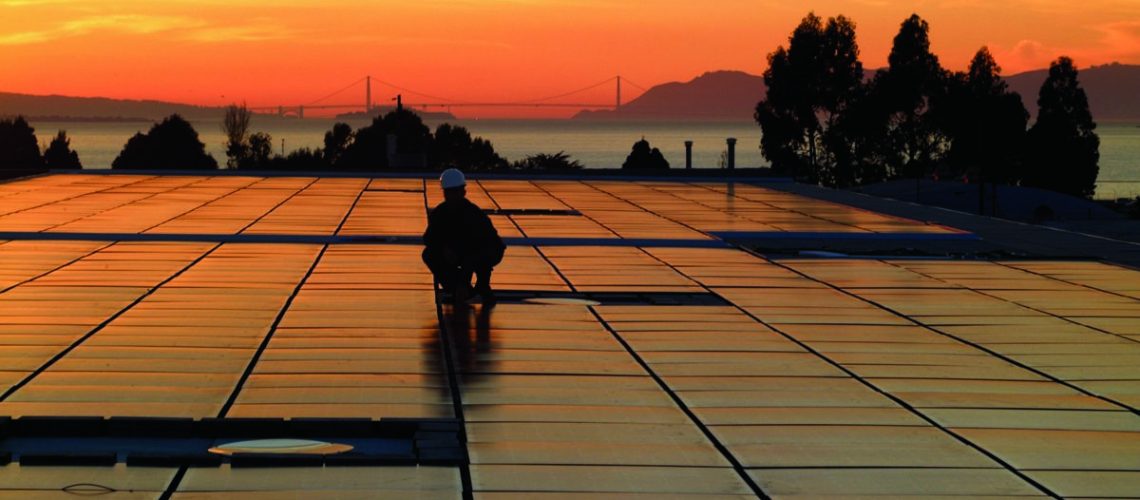The U.S. distributed solar market, which typically involves projects less than 10 MW in capacity, doubled its market size to 8 GW from 2018 through 2022.
Over the last four years, buildout has been pushed down by trade policy challenges, supply chain constraints, persistent labor shortages, and lifted by record-breaking retail electric rate increases and an increased consumer demand for clean energy.
Wood Mackenzie said to look for policy to continue to shift away from retail-rate net metering policies and towards community solar. Net metering involves the crediting of a customer bill for sending excess solar generation to the grid, while community solar typically involves subscribers signing on for a share of generation from an off-site facility that sells wholesale power to the grid.
Net metering down
In the distributed generation (DG) space, across the United States utility-backed proposals and bills in several states including California, Florida, Indiana, Idaho, Michigan, and North Carolina, sought to cut net metering compensation rates.
Likely the most impactful outcome of net metering rulemaking came out of California, where net energy metering 3.0 was approved. The rates paid to participating ratepayers who install solar after April 15, 2023, will be paid based on the Avoided Cost Calculator, a device created by utilities with the goal of avoiding cross-subsidization of solar owners by non-solar owners. The new rate cuts payments by about 75%, and this model may be used by other states if deemed successful.
U.S. retail electricity prices are expected to continue to rise in 2023 to $0.154/kWh, after a 10% increase in 2022. This amounts to an 18.3% increase since 2019. Over the same period, Wood Mackenzie said that that the national market penetration of residential solar will have grown from 3.4% to 7%.
Under new tariff rates, installers will have to find ways to aid their customers in increasing self-consumption and relying on net-metered energy less. Energy storage, proper system sizing, and microgrid-forming devices like the Enphase IQ8 are some tools in the toolkit to maximize customer value.
“Beyond self-consumption, the future holds opportunities for solar-plus-storage systems to provide value through resource aggregation,” said Wood Mackenzie. “Evolution away from retail rate net metering will accelerate the formation of partnerships between battery storage manufacturers, solar-plus-storage installers, and aggregators as they try to capture the value of providing real-time grid services via virtual power plants and package the resulting savings into initial solar-plus-storage retail offerings.”
Community solar
As net metering is phased down in many major markets, state-sponsored community solar programs are on the uptake. With just over 1 GW of new capacity expected for 2022, community solar makes up under 13% of the distributed generation market, said Wood Mackenzie.
Currently 13 states have formal community solar programs, in addition to several states that have utility-run community solar programs. These programs combine to a forecasted 7.3 GW of new solar capacity between 2022 and 2027,” said Wood Mackenzie. This growth is further boosted by a federal push for community solar and rich incentives included in the Inflation Reduction Act.
In September, the California State legislature enacted A.B. 2136, authorizing regulators to create a new, state-wide program. Although the precise rules of the program have yet to be established, we expect the first projects could come online as soon as 2024. By 2027, Wood Mackenzie expects upwards of 250 MW of new installations annually, though this number may be revised upward significantly depending on the structuring of the program, which will take place over the course of 2023.
In 2021, Michigan, Ohio, and Wisconsin introduced bills proposing state-wide community solar. All three will likely face opposition from political leaders and utilities. However, if established this year, these programs provide an upside to the Wood Mackenzie forecast of at least 400 MW by 2027.
Arizona Public Service (APS) filed a community solar program proposal in Q3 2022, though it is unlikely to be approved in the proposal’s current state, said Wood Mackenzie. The initial request for proposals would result in 140 MW of community solar. And in Pennsylvania the prospect of a new community solar program has already resulted in early-stage development.
Leases gain ground
The solar industry still awaits guidance from the Department of Treasury on the investment tax credit bonus adders, including for domestic content, energy communities, and low-income goals. Many installers and financiers expect that it will be beneficial to offer third party-owned products (leases or power purchase agreements) regardless of the final details of the guidance.
The third-party ownership (lease and power purchase agreement) segment reached its lowest quarterly share in Q3, 2022 at 18.6% but still experienced considerable growth of 27% year-over-year in 2022 through Q3. The third-party ownership segment is expected to continue to grow and win back share starting in 2023, as it will benefit from being the only residential solar financing segment eligible for the investment tax credit adders.
Although the loan market has consistently dominated the residential solar space since 2018 and grew 66% year-over-year in 2022 through Q3, rising interest rates and dealer fees will slow the segment’s growth in the first half of 2023, said Wood Mackenzie.
Companies that only offer loans may struggle as it will be difficult for salespeople to continue selling loan products at the same pace in this higher rate environment. As such, Wood Mackenzie said companies offering multiple products will gain a competitive advantage in 2023.



